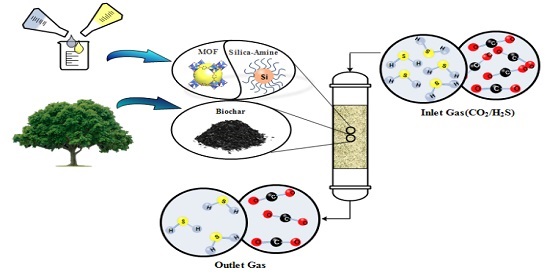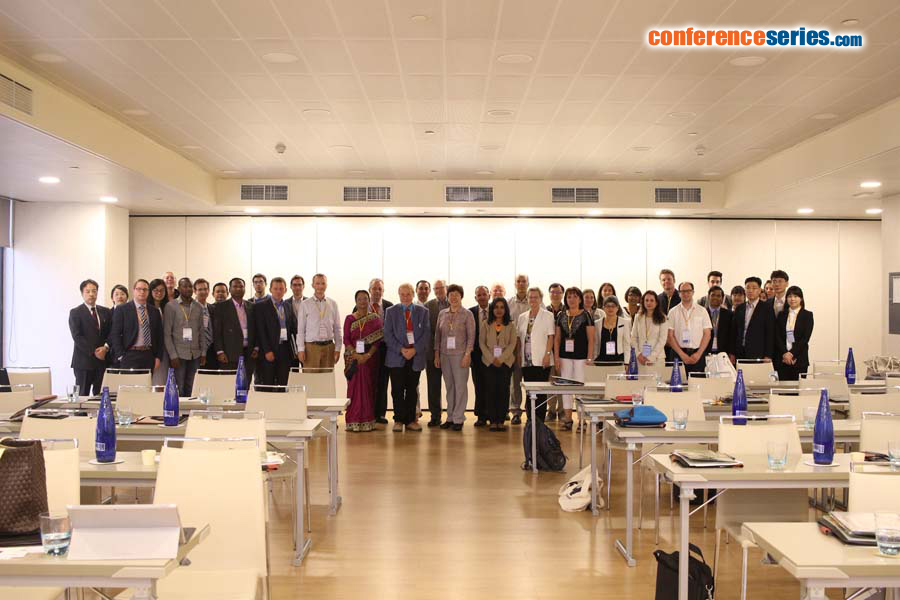
Hanieh Bamdad
Memorial University, Canada
Title: Experimental and Theoretical Analysis of CO2 Adsorption Process for Optimization of Carbon based (Biochar) Adsorbent
Biography
Biography: Hanieh Bamdad
Abstract
Biochar, a product of pyrolysis of biomass, represents an attractive alternative and, depending on the biomass source, sustainable adsorbent material for treating gaseous effluents. In this study, biochar sourced from three different woody biomasses (i.e. softwood shavings, softwood bark, and hardwood sawdust) were produced via fast pyrolysis at different pyrolysis temperature (400-500 ºC) in a 2-4 kg/h auger reactor. The produced biochars were characterized for elemental composition, surface area, morphology, proximate analysis, and thermal properties. The CO2 adsorption capacity of produced biochars was determined in a fixed-bed adsorption unit. Response surface methodology (RSM) coupled with a central composite design (CCD) was used to investigate the impact of significant process factors on the adsorption capacity of biochar. Three variables were investigated including temperature (20-80 °C), the inlet flow rate (60-200 mL/min.g), and volume fraction of CO2 (20-100% (v/v)). The optimum CO2 capture capacity of biochar was obtained at an adsorption temperature of 20 ºC, CO2 volume fraction of 100%, and inlet flow rate of 60 ml/min. The ANOVA analysis illustrated that the quadratic model fitted the experimental data well. In addition, the effect of different biochars obtained from fast pyrolysis of softwood shavings and hardwood sawdust pyrolyzed at different pyrolysis temperatures were investigated at optimum conditions. Softwood shavings pyrolyzed at 500 ºC showed the highest CO2 uptake as it has the highest surface area (95.58m2/g).

Recent Publications:
- Ding, Y. D., Song, G., Liao, Q., Zhu, X., & Chen, R. (2016). Bench scale study of CO 2 adsorption performance of MgO in the presence of water vapor. Energy, 112, 101-110.
- Plaza, M. G., GonzaÌlez, A. S., Pevida, C., & Rubiera, F. (2014). Influence of water vapor on CO2 adsorption using a biomass-based carbon. Industrial & Engineering Chemistry Research, 53(40), 15488-15499.
- Plaza, M. G., González, A. S., Pis, J. J., Rubiera, F., & Pevida, C. (2014). Production of microporous biochars by single-step oxidation: Effect of activation conditions on CO 2 capture. Applied Energy, 114, 551-562.
- Xu, X., Cao, X., Zhao, L., & Sun, T. (2014). Comparison of sewage sludge-and pig manure-derived biochars for hydrogen sulfide removal. Chemosphere, 111, 296-303.
- González, A. S., Plaza, M. G., Rubiera, F., & Pevida, C. (2013). Sustainable biomass-based carbon adsorbents for post-combustio CO 2 capture. Chemical engineering journal, 230, 456-465.
Speaker Presentations
Speaker PPTs Click Here


